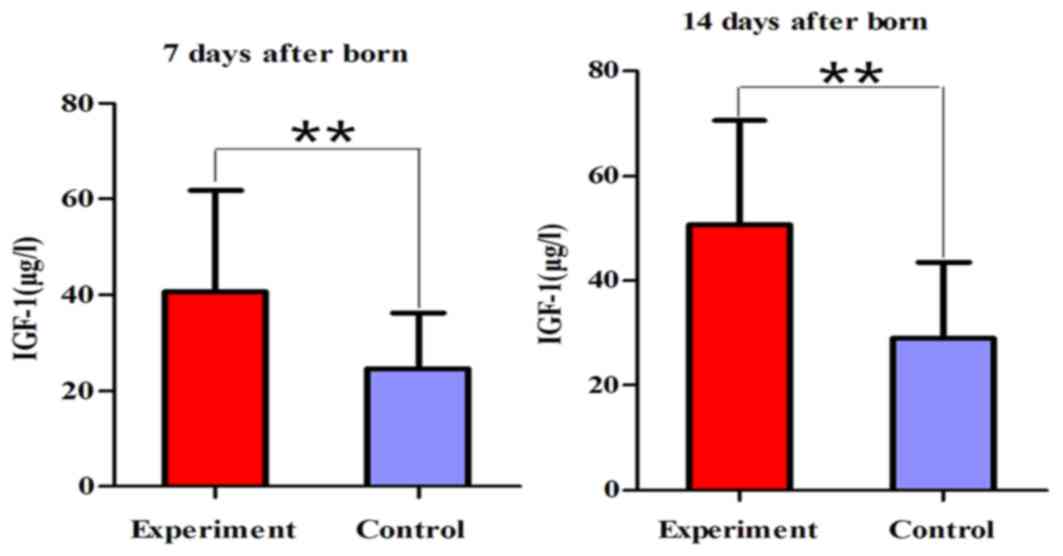Reduced environmental stimuli is associated with improved insulin‑like growth factor‑1 levels and physical growth in very low birth weight premature infants
- Authors:
- Published online on: April 16, 2019 https://doi.org/10.3892/etm.2019.7489
- Pages: 4653-4656
Metrics: Total
Views: 0 (Spandidos Publications: | PMC Statistics: )
Total PDF Downloads: 0 (Spandidos Publications: | PMC Statistics: )
Abstract
Standard environmental features of the neonatal intensive care unit (NICU) may be stressful and not optimal for the maturation of very low birth weight premature infants (VLBWPIs). The present study investigated whether structured no‑touch periods and reducing periods of light and sound stimulation may influence the developmental indices of VLBWPIs. Between June 2012 and June 2013, 60 consecutive VLBWPIs were equally apportioned to either an experimental or control group. The groups were statistically comparable with regard to sex ratio, gestational age and birth weight. Each group received routine nursing care, but infants in the experimental group were additionally cared for in a separate room with 3 h of rest every 8 h, and reduced light and sound from staff and instruments. At 7 and 14 days following birth, plasma insulin‑like growth factor 1 (IGF‑1) levels of the experimental group were significantly higher than that of the control group. Furthermore, at day 7 and 14, the body weight and crown‑to‑heel lengths were significantly increased in the experimental group compared with the control group. In summary, during the first 2 weeks following birth, the reduction of touch, sound and light stimulation in the NICU were associated with higher plasma IGF‑1 levels and physical growth of VLBWPIs. These results may have implications for the better management of VLBWPIs in the NICU.










